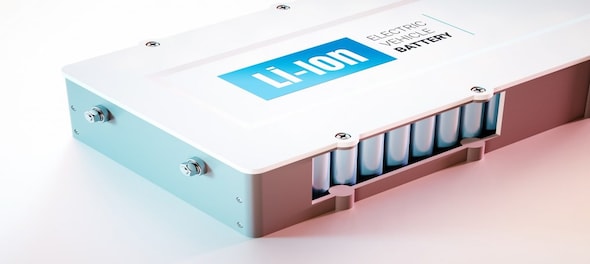
Switching to electric vehicles (EVs) for a greener tomorrow sounds good on paper, but owning an EV is fraught with challenges such as operational range, battery replacement cost, long charging time of batteries and the high cost of the vehicle. As the world begins to adopt EVs, discussions will gravitate towards development of infrastructure such as charging points and adoption of battery swapping or the battery-as-a-service (BaaS) model.
Considering space constraints in urban areas for setting up charging stations at scale, Finance Minister Nirmal Sitharaman announced that the government would introduce a battery swapping policy and inter-operability standards. The government will encourage private players to develop sustainable and innovative business models for battery swapping or ‘Battery or Energy as a Service’. “This will improve efficiency in the EV ecosystem,” the finance minister said while presenting the Union Budget 2022-23.
What is battery swapping?
Battery swapping or battery-as-a-service allows EV owners to replace the discharged batteries with charged ones at the swap stations. When the battery is discharged, the owner can change it with a fully charged one. This will address the problem of setting up charging stations and also reduce range anxiety of drivers. Further, battery leasing can help EV owners save the cost of purchasing a battery. The service is less time consuming and takes only a few minutes compared to charging at a battery station which could take hours. It also requires minimum infrastructure.
How does it work?
An EV owner can visit any outlet of the energy operator and lease charged batteries when it drains out and pay for the electricity consumed, ET Auto.com reported. The system is similar to how consumers use LPG cylinders.
The energy operator purchases batteries in bulk and sets up charging stations to charge discharged batteries. The time taken to swap a battery is similar to refilling the ICE vehicle with fuel. However, ICE vehicles can be refuelled at any petrol pump, while an EV owner will have to enter into a pact with a specific energy operator to swap batteries and visit their outlets each time.
How is the government planning to incentivise?
The Centre is likely to finalise the incentives under the battery swapping policy announced in the Budget within the next two months, Reuters reported. The policy is likely to focus on battery swap services for three-wheeled auto rickshaws and two-wheelers such as electric scooters and motorcycles.
Under the policy, EV owners may get incentives of up to 20 percent on the subscription or lease cost of the battery. The incentives will be over and above those given for buying clean vehicles, the report said.
What happens to the dead batteries?
According to a Guardian report, over 12 million tonnes of lithium-ion batteries are likely to retire between 2021 and 2030. Batteries require large amounts of raw materials such as lithium, nickel and cobalt that have an environmental and human impact. As they reach the end of their lives, batteries threaten to leave a lot of electronic waste.
To keep materials in circulation and reduce reliance on mining, experts are working on how to discard dead batteries and extract valuable metals at scale.
However, some experts feel that instead of recycling a better solution would be to keep the battery in use for longer in alternative sectors.
“There is a lot of (battery) capacity left at the end of first-use in electric vehicles,” The Guardian quoted Jessika Richter of Lund University, as saying.
Although these batteries may not be able to power vehicles any longer, they can be used for storing excess power generated by solar or wind farms.
Energy company Enel Group has employed 90 batteries retired from Nissan Leaf cars to store energy in a facility in Spain, not aligned to the Spanish national grid. Another energy company Powervault in the UK has partnered with Renault to make home energy storage systems with retired batteries.
Finally, when the battery reaches its end, it has to be recycled.
(Edited by : Thomas Abraham)
Check out our in-depth Market Coverage, Business News & get real-time Stock Market Updates on CNBC-TV18. Also, Watch our channels CNBC-TV18, CNBC Awaaz and CNBC Bajar Live on-the-go!


Shehnai by Ustad Bismillah Khan's kin, ode to Kashi's celebrities: PM Modi's roadshow to showcase Varanasi's grandeur
May 13, 2024 11:03 AM
Piyush Goyal speaks on '400 paar' target, Maharashtra power play and more | Full text
May 13, 2024 9:00 AM
Why low voter turnout continues to be a serious subject of discussion as Phase-4 voting begins today
May 13, 2024 8:32 AM
Only 12% of candidates in fray in phase 5 are women, says ADR
May 13, 2024 7:15 AM

